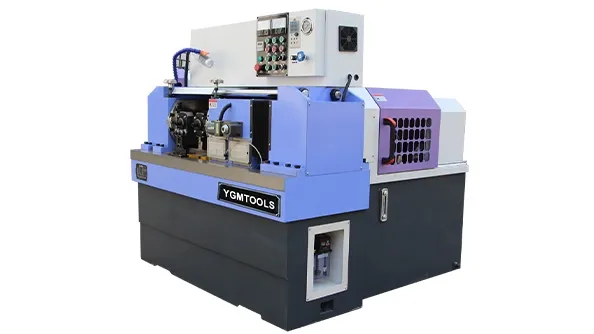
-
 Afrikaans
Afrikaans -
 Albanian
Albanian -
 Amharic
Amharic -
 Arabic
Arabic -
 Armenian
Armenian -
 Azerbaijani
Azerbaijani -
 Basque
Basque -
 Belarusian
Belarusian -
 Bengali
Bengali -
 Bosnian
Bosnian -
 Bulgarian
Bulgarian -
 Catalan
Catalan -
 Cebuano
Cebuano -
 Corsican
Corsican -
 Croatian
Croatian -
 Czech
Czech -
 Danish
Danish -
 Dutch
Dutch -
 English
English -
 Esperanto
Esperanto -
 Estonian
Estonian -
 Finnish
Finnish -
 French
French -
 Frisian
Frisian -
 Galician
Galician -
 Georgian
Georgian -
 German
German -
 Greek
Greek -
 Gujarati
Gujarati -
 Haitian Creole
Haitian Creole -
 hausa
hausa -
 hawaiian
hawaiian -
 Hebrew
Hebrew -
 Hindi
Hindi -
 Miao
Miao -
 Hungarian
Hungarian -
 Icelandic
Icelandic -
 igbo
igbo -
 Indonesian
Indonesian -
 irish
irish -
 Italian
Italian -
 Japanese
Japanese -
 Javanese
Javanese -
 Kannada
Kannada -
 kazakh
kazakh -
 Khmer
Khmer -
 Rwandese
Rwandese -
 Korean
Korean -
 Kurdish
Kurdish -
 Kyrgyz
Kyrgyz -
 Lao
Lao -
 Latin
Latin -
 Latvian
Latvian -
 Lithuanian
Lithuanian -
 Luxembourgish
Luxembourgish -
 Macedonian
Macedonian -
 Malgashi
Malgashi -
 Malay
Malay -
 Malayalam
Malayalam -
 Maltese
Maltese -
 Maori
Maori -
 Marathi
Marathi -
 Mongolian
Mongolian -
 Myanmar
Myanmar -
 Nepali
Nepali -
 Norwegian
Norwegian -
 Norwegian
Norwegian -
 Occitan
Occitan -
 Pashto
Pashto -
 Persian
Persian -
 Polish
Polish -
 Portuguese
Portuguese -
 Punjabi
Punjabi -
 Romanian
Romanian -
 Russian
Russian -
 Samoan
Samoan -
 Scottish Gaelic
Scottish Gaelic -
 Serbian
Serbian -
 Sesotho
Sesotho -
 Shona
Shona -
 Sindhi
Sindhi -
 Sinhala
Sinhala -
 Slovak
Slovak -
 Slovenian
Slovenian -
 Somali
Somali -
 Spanish
Spanish -
 Sundanese
Sundanese -
 Swahili
Swahili -
 Swedish
Swedish -
 Tagalog
Tagalog -
 Tajik
Tajik -
 Tamil
Tamil -
 Tatar
Tatar -
 Telugu
Telugu -
 Thai
Thai -
 Turkish
Turkish -
 Turkmen
Turkmen -
 Ukrainian
Ukrainian -
 Urdu
Urdu -
 Uighur
Uighur -
 Uzbek
Uzbek -
 Vietnamese
Vietnamese -
 Welsh
Welsh -
 Bantu
Bantu -
 Yiddish
Yiddish -
 Yoruba
Yoruba -
 Zulu
Zulu
Setup Guide for Thread Rolling Machines in China
Setting Up a China Thread Rolling Machine A Comprehensive Guide
Thread rolling is a widely adopted manufacturing process, particularly in industries producing screws, bolts, and other fasteners. In recent years, China's thread rolling machines have gained prominence due to their efficiency, innovation, and cost-effectiveness. Setting up a thread rolling machine involves various steps, and understanding these can greatly enhance efficiency and product quality. This article provides a detailed overview of the setup process and considerations for using thread rolling machines in China.
Understanding Thread Rolling
Before diving into setup procedures, it is essential to comprehend what thread rolling entails. Thread rolling is a cold-forming process that involves turning a cylindrical workpiece against specially designed dies to create threads without removing material. This technique results in superior mechanical properties due to the work hardening effect.
China’s thread rolling machines vary from simple manual units to sophisticated CNC-driven systems. The choice of machine depends on production volume, desired precision, and specific application needs.
Steps to Set Up a Thread Rolling Machine
1. Location and Foundation Preparation The first step in setting up a thread rolling machine is choosing an appropriate location. The floor must be level and capable of supporting the machine's weight. It is advisable to consult the machine’s technical specifications for the exact weight requirements. Additionally, a stable surface minimizes vibrations that could affect precision.
2. Power Supply Installation Next, ensure that you have a reliable power supply. Most thread rolling machines require a three-phase power supply, providing sufficient voltage to operate effectively. It's crucial to follow local electrical codes and guidelines during installation to ensure safety and compliance.
china thread rolling machine setup

3. Machine Assembly Follow the manufacturer’s assembly instructions meticulously. This usually involves attaching the main components such as the thread rolling head, work table, and control panel. If the machine is CNC-operated, calibration of the axes is also necessary. Take care not to rush this process; proper alignment can significantly impact thread quality.
4. Die Selection and Installation The die used in thread rolling is critical as it determines the final thread profile. Choose dies that match the specifications of the product you intend to manufacture. Installation of the dies should be performed with precision, ensuring they are securely mounted with no play that could lead to inaccuracies during production.
5. Alignment and Calibration After installing the dies, align the machine components to ensure that the workpiece will pass through the die smoothly. This involves adjusting the rolling head and ensuring the feed rate is correctly set. Regular calibration is vital in maintaining thread quality over time.
6. Testing and Adjustment Conduct initial test runs with scrap materials. This helps to identify any adjustments required for optimal performance. Monitor the first few threads closely and be prepared to make ethic fine-tuning, such as adjusting the pressure, speed, and temperature depending on the material being used.
7. Training Operators Proper training for operators is indispensable. Staff should be familiar with machine operation, safety protocols, and troubleshooting procedures. Regular training can significantly reduce operational downtime and improve overall output quality.
8. Maintenance Schedule Establishing a regular maintenance schedule is essential to prolong the life of the machine. This includes lubricating moving parts, checking electrical connections, and inspecting dies for wear and tear.
Conclusion
Setting up a thread rolling machine in China is a process that requires careful planning, execution, and continuous management. By following the steps outlined above, manufacturers can achieve efficient operations, produce high-quality threaded products, and ensure a safe working environment. As technology advances, staying abreast of new techniques and machine upgrades will further enhance production capabilities in this vital sector. Leveraging China’s manufacturing prowess, businesses can remain competitive in the global market while maintaining quality and efficiency.
